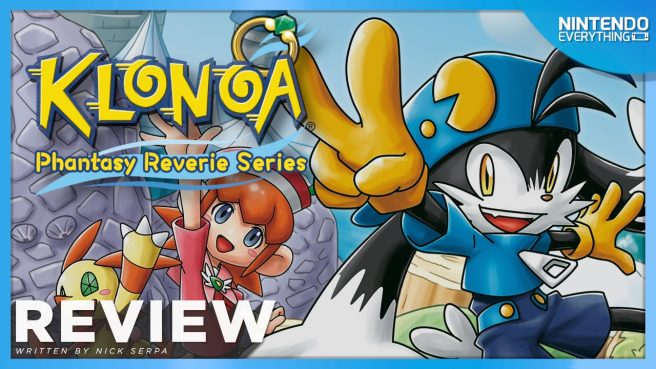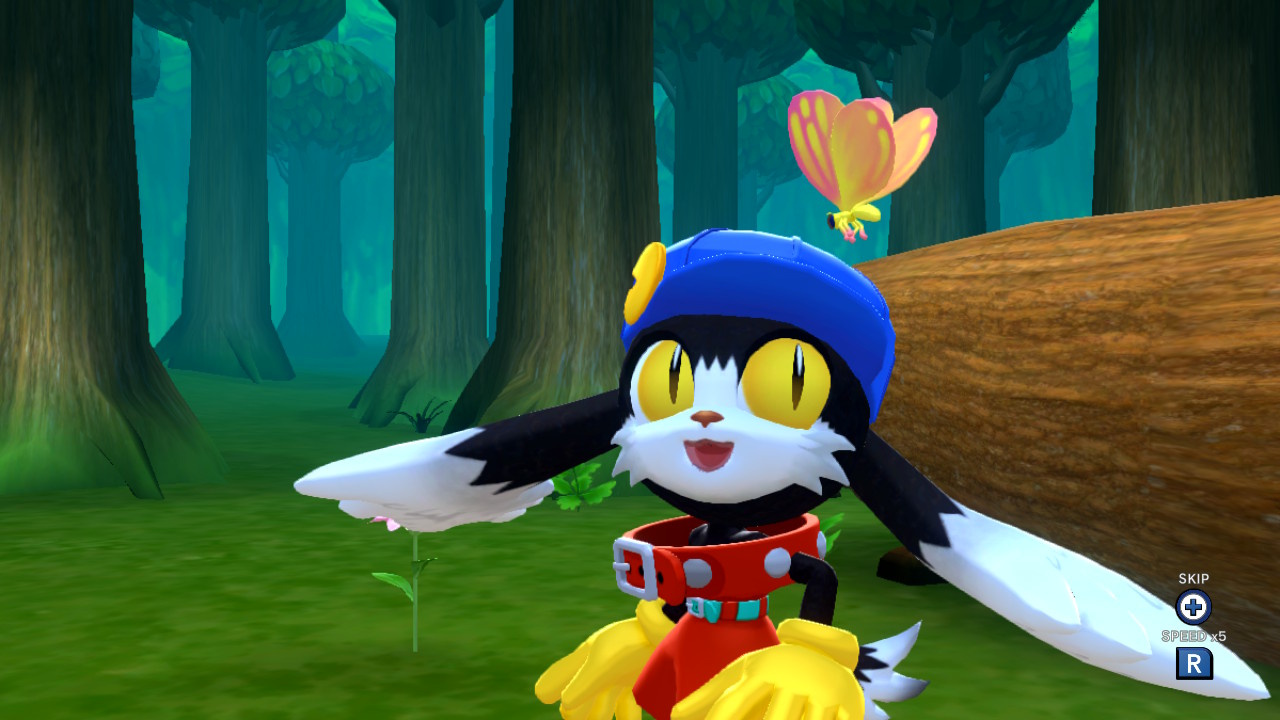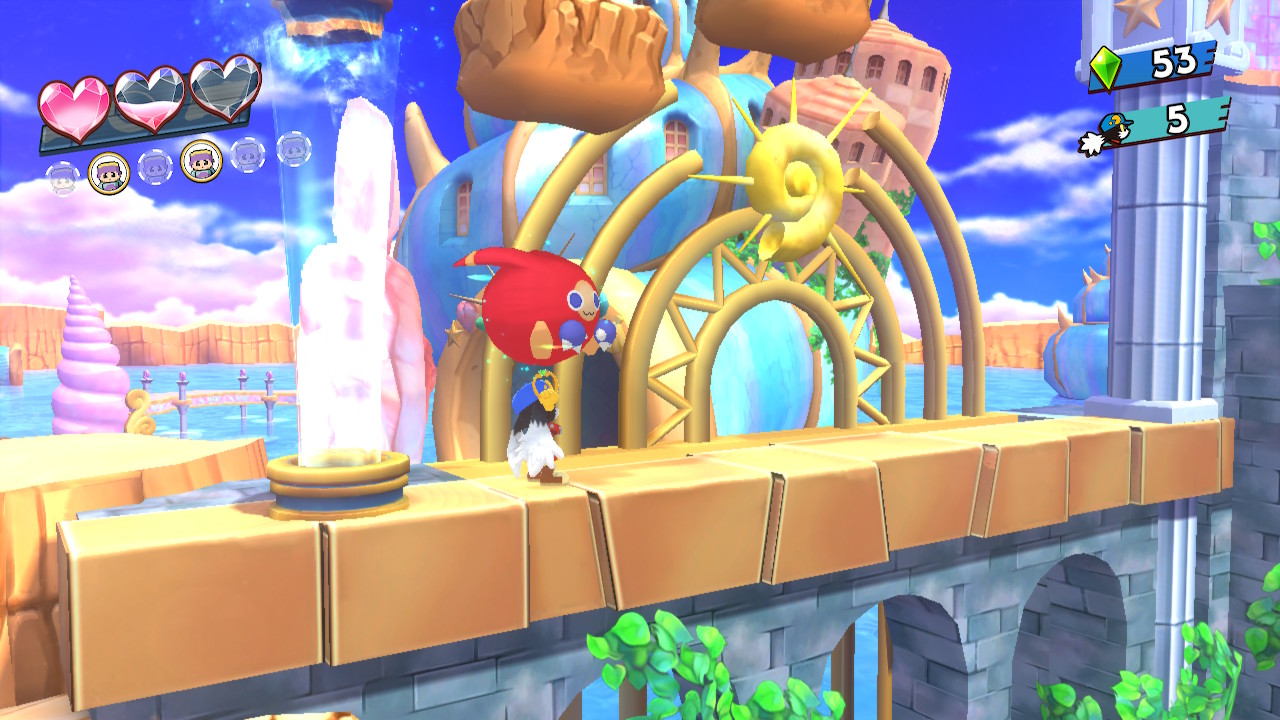[Review] Klonoa Phantasy Reverie Series
System: Switch
Release Date: July 8, 2022
Developer: Monkey Craft
Publisher: Bandai Namco
Normally, when a game franchise fails to meet a publisher’s sales expectations, that tends to be the end of the road for it. Indeed, despite both 1997’s Klonoa: Door to Phantomile and 1999’s Klonoa 2: Lunatea’s Veil garnering a very positive reception from critics at the time of their release, these 2.5D platformers never managed to reach a big enough audience to truly compete with the likes of Mario and Crash Bandicoot. The franchise has been dormant for well over a decade now, with no new games being developed since 2008’s Wii-exclusive remake, which was an attempt to revive Klonoa that never took off. Fortunately, Bandai Namco is giving their plucky cat-like hero yet another chance to shine with Klonoa Phantasy Reverie Series, which remasters both classic games for a modern audience. But how well do these decades-old platformers hold up today?
Klonoa Phantasy Reverie Series marked my first time playing through these classic games, and perhaps the highest praise I can offer is that I was having copious amounts of fun at basically every second. There are a lot of factors that contributed to that, from the games’ adorable character design and vibrant, animated world, to their infectious soundtracks and (surprisingly) funny writing. But perhaps most significant to me was that I’ve never experienced a platformer that plays quite like Klonoa. Almost every stage (or “Vision”, as their called in these games) introduced some new type of interesting mechanic or gimmick to overcome, and I was consistently surprised at how creative and engaging almost all these ideas were.
The main differentiator between Klonoa and other platformers is that you don’t jump or spin or attack enemies to defeat them. Instead, you pick them up or grab onto them. This allows for all sorts of unique ways to interact with and traverse through the various dream-like worlds of these games. For example, picking up an enemy and then throwing it down towards the ground in midair allows you to double-jump, making it easier to reach higher ledges. You can also throw enemies into each other; some of them even explode, making it possible to chain together certain attacks and set off chain reactions. Some enemies can be grabbed onto, launching you high into the air for a short amount of time. Traversal is often a puzzle in Klonoa, and figuring out how to use your enemies to your advantage is always satisfying.
Klonoa games are also relatively unique thanks to their 2.5D perspective, which is implemented in a way that was incredibly innovative at the time these games released. While Klonoa typically moves on a 2D plane, the paths he traverses often bring him forward and back into the game’s environment, or at the very least allows him to interact with objects in the foreground and background. Practically, what this means during gameplay is that there are often secrets tucked just out of reach, that act as an incentive for players who are trying to nab every in-game collectible to explore just a little bit more. It’s an incredibly immersive way to add literal depth to what otherwise could have been a clever but simple platforming experience.
While neither Door to Phantomile nor Lunatea’s Veil are particularly lengthy games, each stage is of remarkably high quality and creative direction that reflect the love and care that were poured into these games. My favorite stage was one in which the time of day would change every 20 seconds or so, making enemies invulnerable to your abilities briefly until the sun revealed itself again. I was also blown away by some stages in Lunatea’s Veil that take place in slightly haunted amusement park, which introduced so many exciting (albeit brief) platforming segments that I was a bit bummed when they were over.
Every few stages culminates in some sort of boss battle, and while these were all solid, they didn’t feel as engaging overall as the main levels. That mostly is due to predictable and simple attack patterns that have been done to death at this point, with a few exceptions here and there towards the end of each game. I still enjoyed them, though, mostly due to the corny writing that the villains would espouse. That applies particularly strongly for a character named Joka, who is basically Klonoa’s equivalent of Bowser Jr and is simultaneously a subtly funny henchman and an absolutely massive jerk.
Surprisingly, the story is a fairly large part of Klonoa’s identity as a game. The main theme of these games is dreams, and while I don’t feel like these games approach the topic with very much depth – these were originally marketed as kids’ games, after all – there’s a huge focus on unraveling the mystery of these mysterious worlds. Almost every stage is bookended by surprisingly lengthy story sequences that often have just a tinge of sadness to them, just a hint of melancholy that undermines the joyful energy that radiates from Klonoa. It adds weight and urgency to the stakes of Klonoa’s mission, and there was one story beat in the first game that was delivered with so much emotion that it genuinely unnerved me. I certainly wouldn’t go so far as to imply that Klonoa is some sort of narrative tour-de-force, but he way the story was presented definitely hooked me deeper into the experience.
From a technical perspective, Phantasy Reverie Series is a very well-executed remaster that runs great on the Switch. While Lunatea’s Veil as it’s presented here is a simply a sharper, brighter version of the original PS2 sequel, the version of Door to Phantomile included in this package is a remaster of the 2008 Wii version of the game rather than the original PS1 release. Interestingly, though, this version of Door to Phantomile abandons the full voice acting of that 2008 remake, instead opting for to original 1997 voice tracks that are presented in an in-game fictional gibberish language. It’s the only change that feels a bit jarring, as while in-game music is clean and crisp-sounding, voiceover tracks sound decidedly low-fi and dated. It grew on me over time, but it’s a stark reminder that these are still older games down at their root level. It’s great to see Lunatea’s Veil running in a modern engine for the first time, though, and the frame rate and resolution for both titles remained rock solid throughout my playthrough.
Also added to these remasters is an easy difficulty, which I think will be essential for younger players wanting to enjoy this game. Klonoa is a blast to play, but it does contain some tricky platforming segments that demand some very precise jumps, and some of the stages in these games can be lengthy – meaning running out of lives could sometimes mean losing a solid half hour of progress. Easy mode gives Klonoa infinite lives and makes it possible from him to grab enemies from further distances. It’s a great option to make these games accessible to an even broader audience, which I always love to see in these types of remasters.
The Verdict

Klonoa Phantasy Reverie Series managed to transform me from someone with minimal interest in the franchise into someone who eagerly wants to see more of these games as soon as possible. Both Klonoa 1 and 2 are creative, polished, mechanically innovative games, and they absolutely hold up to the standards of modern platformers in more ways than you might expect. Anyone with an interest in the history of the genre owes it to themselves to check out these classic games, and returning fans now have the joy of re-experiencing these games in their definitive state.
Klonoa Phantasy Reverie Series copy provided by the publisher for the purposes of this review.



